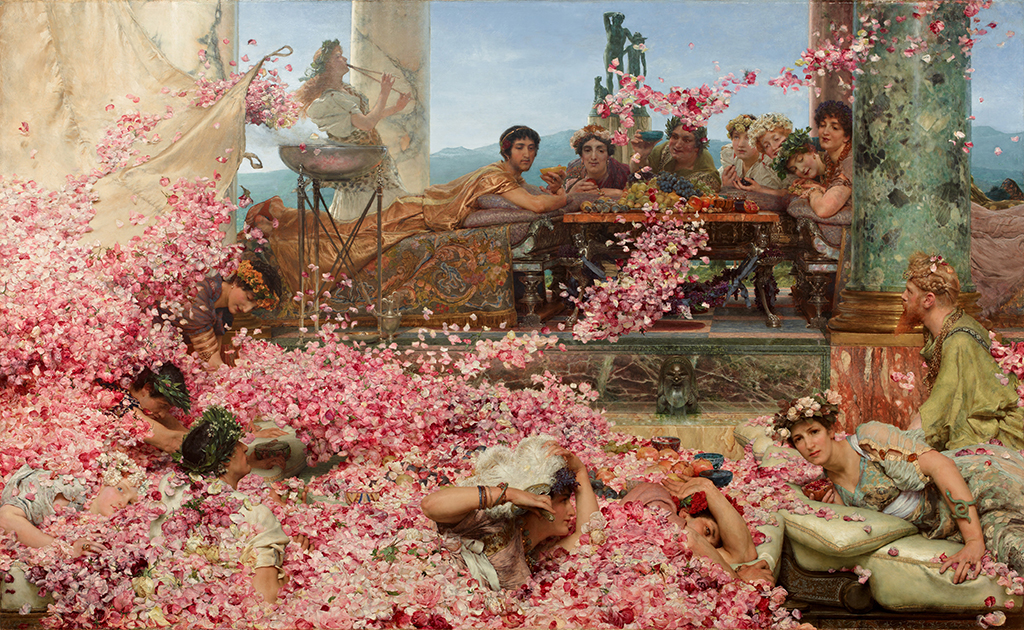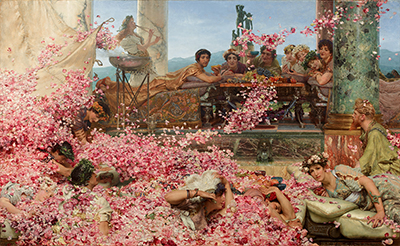Sir Lawrence Alma Tadema's The Roses of Heliogabalus is based on the story of a young Roman monarch who misused his power.
Tadema was a talented painter who focused much of his creativity on historical depictions of Roman life. While he was quite successful and famous while he was alive, this changed shortly after. Sometimes consumers change in their demand for a particular type of art. As a new form arises, soemthing else may become less popular for a while. This happened for a time to Sir Lawrence Tadema's paintings. However, they recovered in value, far exceeding their initial valuations.
Sir Lawrence got a kick out of the chance to paint fresh blooms and the attention he paid to detail is obvious in each flower in the painting. When he was completing The Roses of Heliogabalus, he had roses sent each week for four months from the French Riviera with the goal that he would do each flower precisely. The painting is about Roman wantonness and has a large number of bunches of pink petals.
Marcus Aurelius Antoninus was just fourteen years of age when he got to be head of Rome in AD 218. Perhaps he was too young to rule. Perhaps he had not been raised to be a leader who put the welfare of his people above his own excesses. Whatever the reason, he is reputed to have treated the citizens of Rome poorly, using the funds of the country to finance his own extravagant lifestyle. Otherwise called Elagabalus or Heliogabalus after the Syrian sun god that he attempted to present as the incomparable god, the monarch's ludicrous conduct and the way that he despised wise behaviour prompted his demise just four years after the fact.
Elagabalus stacked violets and different blossoms in a banqueting room with a reversible roof, in a manner that some of his followers lapsed when they couldn't find their way out to the surface. What appears to be an extravagant shower of petals falling downward on revelers at a meal really delineates their demise. It is not immediately apparent but a number of them will be covered underneath the blooms for the beguilement of the sovereign and his friends. Alma Tadema used roses instead of violets in his painting because for the Victorians, roses regularly were typical of arousing magnificence, defilement and even passing.





